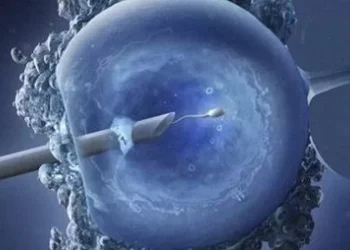The fertility rate in the United States has reached a historic low. According to the Centers for Disease Control and Prevention (CDC), the general fertility rate (GFR) in 2023 was 55.8 births per 1,000 women aged 15-44, the lowest recorded rate in U.S. history. The total fertility rate (TFR), which estimates the number of children a woman would have over her lifetime based on current age-specific birth rates, has also declined to 1.64, well below the replacement level of 2.1 necessary to maintain a stable population.
Trends Over Time
The U.S. fertility rate has been on a general downward trend for several decades. After a significant baby boom in the mid-20th century, fertility rates began to decline sharply in the 1970s. While there were brief periods of stabilization and even slight increases during the late 1980s and early 2000s, the overall trend has been a steady decline. The Great Recession of 2007-2009 marked a notable drop, with many couples delaying or deciding against having children due to economic uncertainty. Despite some recovery in the economy, fertility rates have continued to decline, reflecting deeper, more persistent shifts in societal behavior and economic conditions.
See also: Infertility and Depression Statistics: Causes & Risk Factors
Age-Specific Birth Rates
The decline in birth rates is not uniform across all age groups. Teen birth rates have seen the most dramatic decrease, falling by 58% between 2007 and 2021. This decline is attributed to better access to contraception, improved sex education, and shifting societal norms.
Women in their 20s, traditionally the age group with the highest fertility rates, are also having fewer children. The birth rate for women aged 20-24 dropped by nearly 40% from 2007 to 2023. For women aged 25-29, the decline was around 30%.
Conversely, birth rates for women in their 30s and 40s have seen smaller declines and, in some cases, slight increases. Birth rates for women aged 30-34 and 35-39 rose slightly in the early 2010s, reflecting a trend of delayed motherhood as women pursue higher education and career goals. The birth rate for women aged 40-44 has remained relatively stable, indicating that some women are choosing to have children later in life.
Factors Influencing Fertility Rates
Several factors contribute to the declining fertility rates in the United States:
Economic Factors: Economic instability and the high cost of living are significant deterrents to having children. The Great Recession had a lasting impact on the financial security of many families. Rising housing costs, student debt, and childcare expenses further exacerbate financial constraints, making parenthood less feasible for many.
Educational Attainment: Higher levels of educational attainment among women are associated with delayed childbearing. As more women pursue higher education and advanced degrees, they tend to delay marriage and childbirth. The increased participation of women in the labor force also means that career considerations often take precedence over starting a family.
Social Factors: Shifting societal norms and attitudes towards marriage and family are also at play. There is a growing acceptance of child-free lifestyles, and many individuals and couples prioritize personal and professional fulfillment over traditional family structures. Additionally, access to contraception and reproductive health services allows women greater control over their reproductive choices.
Health Factors: Advancements in reproductive health and fertility treatments have enabled women to have children later in life, but they also contribute to the overall delay in childbearing. Issues such as infertility and chronic health conditions can also impact fertility rates, as can concerns about the health risks associated with late pregnancies.
Impact of Fertility Rates
The implications of low fertility rates are far-reaching:
Economic Impact: A declining fertility rate can lead to a shrinking workforce, which poses challenges for economic growth and sustainability. Fewer workers can lead to labor shortages, increased pressure on social security systems, and challenges in supporting an aging population.
Societal Impact: Low fertility rates can alter societal structures, leading to smaller family sizes and potential changes in community dynamics. There may be fewer young people to support older generations, which can strain social services and healthcare systems.
Resource Allocation: Governments and policymakers must adapt to changing demographics, reallocating resources to address the needs of an aging population while supporting families and children. This includes investing in healthcare, education, and social services to ensure a balanced and equitable distribution of resources.
Comparative Measures of Fertility
Understanding fertility behavior requires looking at various measures of fertility:
General Fertility Rate (GFR): The GFR is the number of births per 1,000 women aged 15-44 in a given year. It provides a snapshot of fertility within a specific age range but does not account for age-specific variations.
Total Fertility Rate (TFR): The TFR estimates the average number of children a woman would have over her lifetime based on current age-specific birth rates. It is a more comprehensive measure than the GFR, as it reflects the fertility behavior of women across all reproductive ages.
Completed Fertility: Completed fertility refers to the total number of children a cohort of women have by the end of their reproductive years. It offers a historical perspective on fertility trends, as it reflects the reproductive outcomes of women who have completed childbearing.
Healthcare Trends
Healthcare trends related to fertility are also evolving:
Cesarean Delivery Rates: The rate of cesarean deliveries in the U.S. has been high, with nearly one-third of all births delivered by cesarean section. While cesarean deliveries can be life-saving, they also come with risks and longer recovery times. Efforts to reduce unnecessary cesarean deliveries focus on promoting vaginal births and improving maternal health outcomes.
Preterm Birth Rates: Preterm birth rates in the U.S. have declined slightly in recent years but remain higher than in many other developed countries. Preterm births, which occur before 37 weeks of gestation, can lead to health complications for infants and increased healthcare costs. Addressing risk factors such as maternal health conditions and access to prenatal care is crucial for reducing preterm birth rates.
See also: Menstruation’s Relation to Infertility: Everything You Need To Know
Policy and Healthcare Responses
To address the decline in fertility rates and support families, various policy and healthcare measures have been implemented:
Family-Friendly Policies: Governments and employers are increasingly recognizing the need for family-friendly policies. This includes paid parental leave, flexible work arrangements, affordable childcare, and financial incentives for families. Such policies can help alleviate the economic pressures associated with raising children and encourage higher birth rates.
Healthcare Access: Ensuring access to reproductive healthcare services is vital. This includes contraception, fertility treatments, prenatal and postnatal care, and comprehensive sex education. Improving healthcare access can help individuals and couples make informed reproductive choices and improve maternal and child health outcomes.
Support for Working Parents: Policies that support working parents, such as subsidized childcare and parental leave, can make it easier for individuals to balance work and family life. This can encourage higher fertility rates by reducing the financial and logistical challenges of raising children.
Addressing Infertility: Infertility affects many couples and can be a significant barrier to having children. Expanding access to fertility treatments, such as in vitro fertilization (IVF), and providing financial support for these treatments can help more couples achieve their desired family size.
Public Awareness Campaigns: Public awareness campaigns that promote the benefits of family life and the importance of early childbearing can also play a role in addressing fertility decline. These campaigns can challenge societal norms and encourage individuals to consider starting families earlier.
Conclusion
In conclusion, the declining fertility rate in the United States is a multifaceted issue influenced by economic, social, and health factors. Understanding the trends and implications of low fertility rates is crucial for developing effective policies and healthcare strategies to support families and ensure a balanced and sustainable population. By addressing the challenges associated with declining fertility rates, society can create a supportive environment for individuals and families, promoting a healthier and more prosperous future for all.
Related Topics:
Reasons You May Not Be Ovulating Regularly: A Quick Guide



























